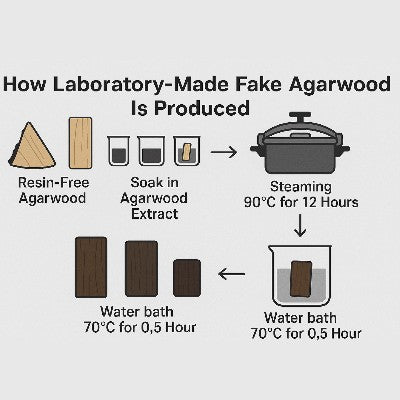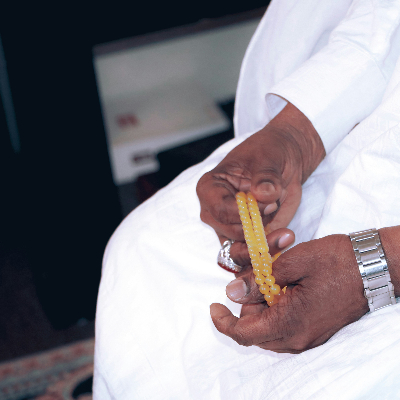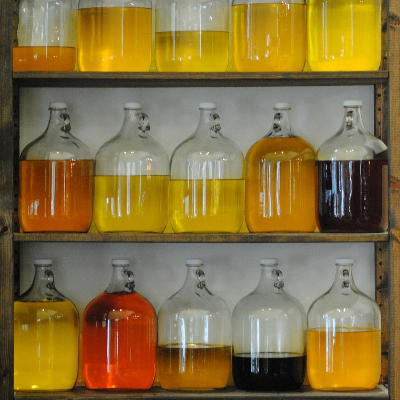Thực đơn
-
-
Câu hỏi thường gặp
- Cách nhận biết dăm trầm hương thật, tự nhiên hay trồng trọt
- Cách nhận biết hạt trầm hương giả phun/hấp dầu
- Làm thế nào để biết có nhiều hơn một loại dầu trong dầu của bạn
- Cách làm cho vòng tay bằng gỗ hoặc mala của bạn tối màu hơn
- Làm thế nào để nhận biết hạt Trầm hương có chìm mà KHÔNG chìm trong nước?
- Hương ngược hoạt động như thế nào và bạn đốt nó như thế nào?
- Bắt đầu từ đâu nếu bạn không biết trầm hương là gì?
- Tại sao bạn lại mất tiền nếu mua hạt giống và cây trồng?
- Nên chọn loại trầm hương nào?
- Các câu hỏi thường gặp
- Các bài viết liên quan đến trầm hương
- Đang chuyển hàng
-
CỬA HÀNG - Trầm hương
-
SHOP - Gỗ Thơm Khác
-
SHOP - Đế và Lư Hương
-
- Hướng dẫn sử dụng dầu Oud MIỄN PHÍ
- Lời chứng thực
- "Tại sao bạn lại mua cái này?"
- Liên hệ chúng tôi
- Về chúng tôi
- +61430284329
- Đăng nhập
-
Tiếng Việt


Agarwood Through an experienced user's eyes: Part 2: Agarwood beads
Tháng 8 13, 2025 6 đọc tối thiểu
On the market, fake agarwood that can be spotted at a glance is often produced by high-pressure oil injection. The oil lines are uniform, the colour is consistent and often dark or black in colour
Like I wrote in part 1, this time I will show you a bit more detail.
How is genuine Agarwood formed?
There are different ways Aquilaria trees form Agarwood. The formation process directly influences the aroma and its value
-
Natural agarwood
Formed over long periods in the wild through natural damage (e.g. wind, lightning, animal wounds). It is extremely rare and considered the most precious and pure. It may take hundreds of years to form.However, this one is debatable. Here is my question to you.
What if I have an Agarwood tree in my plantation and I did not touch it, I let it grow naturally and let neighbour cows come and eat some of the leaves and chewing branches. I also let insects including ants attack and make nest inside the tree. After a while, the tree will have agarwood. Would you classify this as natural Agarwood?
Did you know the orange we eat every day is not in available in the wild? Do you call it "artificial orange" or "natural orange" or "cultivated organge" or just orange?
-
Insect-bored agarwood
Caused by insect infestation creating wounds through which fungi and resin develop. These types are usually porous and fragrant, and considered a natural form, albeit often lighter in density. -
Fungal infection agarwood
Produced when a tree breaks due to strong wind or storm, allowing fungal infection and resinification. It is a subtype of naturally formed agarwood. -
Buried agarwood
Formed in trees that have fallen and been buried in soil. Over many years, the tree decomposes and becomes embedded with dense, oily resin. These pieces are often very dark and sinking in water, regarded as extremely high-grade. -
Cultivated agarwood
Created through methods such as cutting, inoculating fungi, or chemical stimulation. While more accessible, it varies in quality and if done right could potentially achieve the complexity of natural agarwood.
People are led to believe "the darker the colour of the agarwood, the better the quality". While this is true, it is not an easy task to spot. Many counterfeiters, when making fake agarwood mala or bracelet, will make it very dark in colour to market it as the highest-grade natural agarwood. This is based on the restless mentality of many agarwood buyers, who often want the best quality for the lowest price.



Touch and feel: Identifying Real and Fake by Hand
Use your hand to rub the surface of agarwood. If it is genuine agarwood, the surface will feel oily, sticky, and cool to the touch. Fake agarwood does not have these characteristics. You can also feel its weight by hand — the oil content is directly proportional to its actual weight. The more oil it contains, the heavier it is; the less oil, the lighter it is.
Warning: this is not an easy task because an Agarwood bracelet or a mala will usually weigh less than 40g usually. Most of the time, they are between 6g to 33g.


An AA Battery will weigh around 30g, I show you the above two images for you to get an idea.
If anything over 40g, you need to watch out, usually it is usually counterfeit. Why? I will explain next
The reason why counterfeit Agarwood is heavier than the genuine ones
First I will show you how a counterfeit Agarwood bracelet is made
It all starts from this healthy Aquilaria cut. You see, this Aquilaria is very healthy because it it is damaged, Agarwood will be formed. SInce it is healthy, there is no Agarwood 
From the healthy Aquilaria log, we can make a healthy Aquilaria beads. This bracelet has mimimum amount of Agarwood

So to "enhance" its look, there are a few "tricks". I will list a few per below
-
Soak it in special mixtures
The wood pieces were put into containers filled with "dye". These liquid are aromatic. They may contain Agarwood oil, herbs, smell like dried medicinal substances. -
Steam the wood
The tubes were heated in hot water at 90°C for 12 hours. This made the wood turn darker in colour, so it looked more like real, high-quality agarwood. -
Final heating
After steaming, the wood was heated again in warm water at 70°C for 30 minutes.

This process make Agarwood beads much denser, hence the weigh increase, hence it is heavier than the genuine Agarwood.
The aroma of these counterfeit could be good. BUT once you experienced genuine Agarwood smell by burning Agarwood wood chip. You can identify immediately these counterfeit. So my advice is to burn Agarwood chip if you are new to this game.
These counterfeit Agarwood bracelet can be very convincing, especially to people who are new to agarwood and have never smelled the genuine Agarwood before. Sometimes, when a fake piece is heated, you might even see oil coming to the surface, which makes it seem more even more authentic. Well the oozing is actually from the mixture in the beads as explained above.
Another point I want to show you
The quality of Agarwood is not better just because it smells stronger.
Genuine agarwood should have a subtle fragrance, and the ideal temperature for its scent to be released is around 39°C. Normally, if you do not deliberately smell it, you might not smell anything, or the scent might be faint. At such times, you can gently rub it with your hand, and the scent will come out, but the scent will not linger on your hand.
If it is fake agarwood, your hands will have a lingering fragrance from the aroma mixture after you rub it.
The key takeaway is this: if you do not have experience with agarwood and cannot recognise the real scent or appearance, you should not try to buy it on your own. It is too easy to be fooled by these well-made fakes. The best way to avoid being scammed is to first learn about agarwood and get familiar with what the real thing looks and smells like before you start shopping.
How do genuine Agarwood beads look?
Genuine agarwood has an inconsistent pattern. If it is a real agarwood product, its colour could also change slightly overtime, especially if it contact with your body. Take an agarwood bracelet as an example — the rate of colour change depends on the owner’s body temperature and the surrounding environmental temperature, so every person’s bracelet is unique.
Most of the time, the colour is darkened as our body chemicals will harmonise with the Agarwood
I chopped my Agarwood bead to show you how it looks outside and inside


You can see there are many oil line which later will become resin as these harden over time.
Many people have never encountered real agarwood, they do not know what its scent and colour should be like. They only hear that the more oily and black it is, the better it is.
Therefore, counterfeiters add "oil" (fragrance mixture) to wood to impersonate agarwood. However, this type of agarwood lacks oil lines. You must be extra careful when purchasing. From a visual perspective, genuine agarwood, whether it is full of oil or a common piece, should have oil lines; a lack of them is an abnormal sign. See the above images of mine. Outside and inside appearance.
Some high-grade agarwood may also appear pitch-black all over due to its high oil content, and the oil lines may not be visible. If you have not tried agarwood before, do not touch these. Very risky, I could not trust myself either as I could be fooled just like you. I am still learning every day.
In this case, you can judge its authenticity by its weight (usually under 40g for a bracelet). Remember, this type of agarwood is generally heavy enough to sink in water, and its price is also very high
What have I learnt?
Agarwood has a long history and a strong appeal, but the market is full of fakes that can easily fool beginners. Many “agarwood” products are made to look and smell impressive, but they aren’t the real thing. Common tricks include injecting oil under pressure, dyeing the wood pitch-black, or using ordinary wood soaked in scented mixtures and steamed to make it heavy.
Here’s the key point: very dark color or an intense smell is often a warning sign, not proof of quality. Real agarwood has a gentle, layered scent that comes alive at certain temperatures. Its natural oil patterns are uneven and organic—sometimes absent altogether in the highest-grade pieces, which can be extremely dense. Weight is also a clue: genuine agarwood bracelets or malas usually weigh under 40g, while fakes are often much heavier because of artificial densification.
If you’re new to agarwood, hands-on experience is your best teacher. Start with small chips and burn them to learn the scent of the real thing. This will train your senses to recognize the authentic aroma and feel, which counterfeits can’t truly copy.
In short: be careful, learn before you buy, and don’t be fooled by claims of “top quality at the lowest price.” Trust your knowledge and your senses. Every real piece of agarwood is rare and special—worth taking the time to find and appreciate.
Để lại một bình luận
Bình luận sẽ được duyệt trước khi hiển thị.
Cũng trong Tin tức

The Eight Major Components of a Traditional Prayer Bracelet
Tháng 11 22, 2025 8 đọc tối thiểu

What is Tasbih? The Deep Meaning of Subhan Allah and the Role of Prayer Beads
Tháng 11 09, 2025 4 đọc tối thiểu

